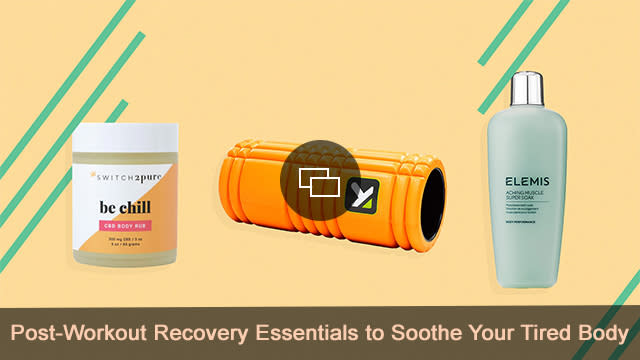Why Your Head Hurts After a Workout — & What to Do About It

R regular exercise comes with plenty of perks — from feeling more connected to your body to the euphoria of runner’s high (it’s real, we promise). It can even reduce your chances of having a headache or migraine. But, it can also have the opposite effect and cause a whopper of a head banger, too. While experts aren’t completely sure what causes them, some of us tend to be more susceptible.
“They are more common in individuals who also experience migraines,” says Rashmi B. Halker Singh, MD FAHS, headache neurologist at Mayo Clinic. In a study published in Headache: The Journal of Head and Face Pain, women disproportionately experienced more migraines than men.
More from SheKnows
Exertion headaches usually occur during or right after an activity that causes tension in the abdominal muscles or increased pressure in the chest from straining during heavy lifting, sneezing, and sexual intercourse. There are two types of exercise headaches: primary and secondary. “Primary meaning there is no known underlying cause and secondary meaning there is an identifiable cause,” says Zubair Ahmed, MD, assistant professor of Medicine at Cleveland Clinic Lerner College of Medicine Director of Headache Research and Outcomes. Sufferers of primary headaches can experience pulsating and throbbing pain throughout their entire head lasting anywhere between five minutes and 48 hours, though primary headaches are usually short. But if this is your first time experiencing this type of headache, check in with your physician because secondary headaches can be linked to other underlying causes. “It is important to rule out things such as tumors, cerebral bleeding, vascular abnormalities including cerebral aneurysms or abnormal connections between the arteries and veins, and abnormal constriction of the blood vessels, so that they can be treated,” says Ahmed.
Before you lose motivation to head to your Zumba class, keep in mind that there are some steps you can take to decrease their occurrence. While a secondary headache needs to be treated, primary exercise-induced headaches usually clear up on their own and you can try the following to keep them at bay:
Drink up
Click here to read the full article.
Hydration is no joke. Make sure to have enough fluids before, after and during all workouts. According to the American Migraine Association (AMF), about a third of those with a migraine say that dehydration led to it. If you feel one coming on, simply drinking a glass of water may stop a full-blown episode.
Eat smart
Stick to a well-balanced diet of protein and carbs, and avoid refined sugars. Your body needs fuel to work out effectively and eating poorly can cause sugar highs and lows. These fluctuations can cause your head to pound.
Warm up
Ease into your workouts by warming up your body and slowly increasing your heart rate. Start your regimen by walking at a slow pace for about five minutes, then slowly graduate to a jog or stretching. Going from zero to ten on the treadmill in 30 seconds may end up causing more harm than good.
Watch the weather
Exercise indoors when it is warm and humid outside, because researchers at Beth Israel Deaconess Medical Center found that weather can influence headache pain. After they looked at the ER visits of over 7,000 patients — who ultimately received a headache diagnosis — it was reported that there was a 7.5 percent higher risk of severe headache with each temperature increase of nine degrees Fahrenheit.
Pop a pill
Try taking a prophylactic drug a few minutes to an hour before exertion. “Certain prescription medications (such as indomethacin or propranolol) beforehand can help,” says Singh. You can also try an over the counter anti-inflammatory such as naproxen. The AMF suggests taking them 30 minutes to an hour before exercise to prevent a primary exertion headache.
If you’ve taken these precautions but you’re still prone to exercise-induced headaches, it may be a sign of something more serious. “Consulting a headache specialist is important because they can tailor the treatment for each individual patient,” says Ahmed.
A version of this story was published May 2019.
Before you go, check out our favorite workout recovery essentials:
Best of SheKnows
Sign up for SheKnows' Newsletter.
For the latest news, follow us on
Facebook,
Twitter, and
Instagram.


